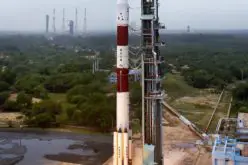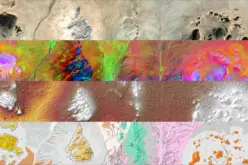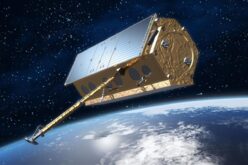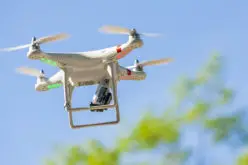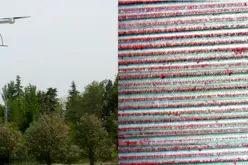Plastic pollution in rivers is a growing environmental challenge. With millions of tons of plastic waste flowing into oceans annually, the need for effective monitoring and cleanup has never been more urgent. A groundbreaking study led by researchers from the University of Minnesota Twin Cities offers a promising solution: a hyperspectral reflectance database for identifying and analyzing plastic debris in river systems. This innovative approach leverages advanced remote sensing technologies to transform how we detect and manage plastic waste in freshwater environments.
The Principle: Hyperspectral Reflectance for Detection
The core of this study lies in hyperspectral imaging, a technology capable of capturing detailed spectral signatures of materials. Each type of plastic exhibits unique reflectance patterns across ultraviolet (UV), visible (VNIR), and shortwave infrared (SWIR) light wavelengths. By analyzing these patterns, researchers can distinguish plastics from other materials like driftwood, algae, or foam. This specificity is key to identifying the types and quantities of plastic floating in river systems.
The Methodology: Controlled Experiments in River-like Conditions
To build the database, researchers conducted experiments at the St. Anthony Falls Laboratory using water from the Mississippi River. They designed a hydraulic flume mimicking natural river conditions, including varying turbidity and foam levels. Plastic samples—virgin, mixed, and weathered—were placed in the flume under different flow regimes. A spectroradiometer, synchronized with a DSLR camera, captured hyperspectral data and corresponding images. This setup ensured precise measurement of the reflectance spectra of various plastics in realistic aquatic environments.
Key steps included:
- Simulating natural conditions: Using clear, turbid, and foamy water to replicate real-world scenarios.
- Categorizing plastics: Grouping samples by type (e.g., polyethylene, polypropylene) and state (virgin or weathered).
- Image segmentation: Applying advanced algorithms to segment plastic fractions from background elements like water and foam.

The Workflow: From Data Collection to Analysis
- Data Acquisition: Hyperspectral reflectance data were captured across 350 to 2500 nanometers for each plastic type under controlled conditions. This range covers ultraviolet, visible, and shortwave infrared wavelengths, ensuring a comprehensive spectral profile for accurate identification.
- Labeling and Segmentation: RGB images were processed to identify and quantify plastic fractions using Otsu’s thresholding method in the YCbCr color space. This method separated brightness and color, improving segmentation accuracy for distinguishing plastics from water and other debris.
- Validation: The dataset was cross-compared with existing public datasets and validated using machine learning models such as XGBoost. Researchers ensured high reliability by conducting multiple measurements for each plastic type under varying conditions.
- Data Archival: All measurements were meticulously categorized and stored in open-access formats (NetCDF and CSV) for ease of retrieval. Metadata included details like sediment concentration, water flow conditions, and plastic types, making the dataset highly versatile for further research.
- Quality Assurance: Each dataset entry underwent rigorous quality checks, including visual inspection and statistical validation, to eliminate errors and enhance data reliability. This ensured that the hyperspectral plastic detection process remained accurate and dependable.

The Technology: Advanced Imaging and Machine Learning
The study utilized state-of-the-art equipment, including:
- Spectroradiometers: These devices measured hyperspectral reflectance with exceptional precision across UV, VNIR, and SWIR bands. The spectroradiometer was mounted on a mobile carriage system for flexible positioning, ensuring consistent measurements across varying flow conditions.
- Digital Imaging: DSLR cameras were synchronized with the spectroradiometer to capture high-resolution images. This setup allowed researchers to link spectral data with corresponding visual representations, enabling a deeper analysis of plastic fractions and background conditions.
- Illumination System: A set of six tungsten-halogen lights provided stable illumination across the spectral range, ensuring accurate reflectance measurements. The system minimized interference from external light sources and maintained consistency in data collection.
- Machine Learning Algorithms: XGBoost classifiers analyzed the hyperspectral data to identify and classify plastics. These algorithms achieved over 90% accuracy, leveraging the unique spectral patterns of each plastic type. Advanced features like spectral angle mapping (SAM) scores further enhanced the detection of subtle differences between plastic types and environmental conditions, making hyperspectral plastic detection a highly effective tool.

Results: Unveiling the Potential of Hyperspectral Data
The experiments yielded over 2,000 hyperspectral measurements, covering various plastic types and environmental conditions. Key findings include:
- Distinctive Spectral Patterns: Different plastics displayed unique reflectance signatures, enabling precise identification.
- Environmental Impacts: Turbidity and foam significantly influenced reflectance, highlighting the importance of context in detection algorithms.
- High Classification Accuracy: Machine learning models effectively classified plastics, even under complex conditions, showcasing the power of hyperspectral plastic detection.

Applications and Future Implications
The open-access database is a vital resource for advancing plastic pollution monitoring. Potential applications include:
- Remote Sensing Integration: Deploying drones or satellites equipped with hyperspectral sensors for large-scale river monitoring.
- Early Detection Systems: Identifying plastic hotspots to guide cleanup operations and prevent downstream pollution.
- Policy Development: Providing accurate data to support environmental regulations and plastic waste management strategies, with hyperspectral plastic detection playing a critical role.
Conclusion: A Leap Forward in Riverine Plastic Management
This study sets a new benchmark for plastic debris detection in freshwater systems. By combining hyperspectral imaging with advanced data analytics, researchers have created a tool that not only improves detection accuracy but also opens new pathways for environmental monitoring. As the fight against plastic pollution intensifies, such innovations offer hope for cleaner rivers and healthier ecosystems.
The hyperspectral reflectance database is a testament to the power of interdisciplinary research and collaboration, providing actionable insights for scientists, policymakers, and environmental advocates worldwide. Together, we can leverage this technology to turn the tide on plastic pollution and preserve our planet’s precious waterways. Hyperspectral plastic detection stands out as a transformative approach in this mission.
Source:
Mohammadali Olyaei et al, A Hyperspectral Reflectance Database of Plastic Debris with Different Fractional Abundance in River Systems, Scientific Data (2024). DOI: 10.1038/s41597-024-03974-x
Journal information: Scientific Data



